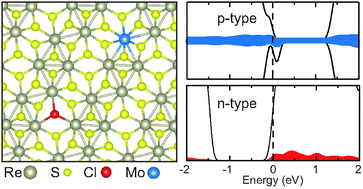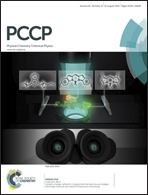Doping of rhenium disulfide monolayers: a systematic first principles study
Abstract
The absence of a direct-to-indirect band gap transition in ReS2 when going from the monolayer to bulk makes it special among the other semiconducting transition metal dichalcogenides. The functionalization of this promising layered material emerges as a necessity for the next generation technological applications. Here, the structural, electronic, and magnetic properties of substitutionally doped ReS2 monolayers at either the S or Re site were systematically studied by using first principles density functional calculations. We found that substitutional doping of ReS2 depends sensitively on the growth conditions of ReS2. Among the large number of non-metallic atoms, namely H, B, C, Se, Te, F, Br, Cl, As, P, and N, we identified the most promising candidates for n-type and p-type doping of ReS2. While Cl is an ideal candidate for n-type doping, P appears to be the most promising candidate for p-type doping of the ReS2 monolayer. We also investigated the doping of ReS2 with metal atoms, namely Mo, W, Ti, V, Cr, Co, Fe, Mn, Ni, Cu, Nb, Zn, Ru, Os and Pt. Mo, Nb, Ti, and V atoms are found to be easily incorporated in a single layer of ReS2 as substitutional impurities at the Re site for all growth conditions considered in this work. Tuning chemical potentials of dopant atoms energetically makes it possible to dope ReS2 with Fe, Co, Cr, Mn, W, Ru, and Os at the Re site. We observe a robust trend for the magnetic moments when substituting a Re atom with metal atoms such that depending on the electronic configuration of dopant atoms, the net magnetic moment of the doped ReS2 becomes either 0 or 1 μB. Among the metallic dopants, Mo is the best candidate for p-type doping of ReS2 owing to its favorable energetics and promising electronic properties.


 Please wait while we load your content...
Please wait while we load your content...